La Cremonese
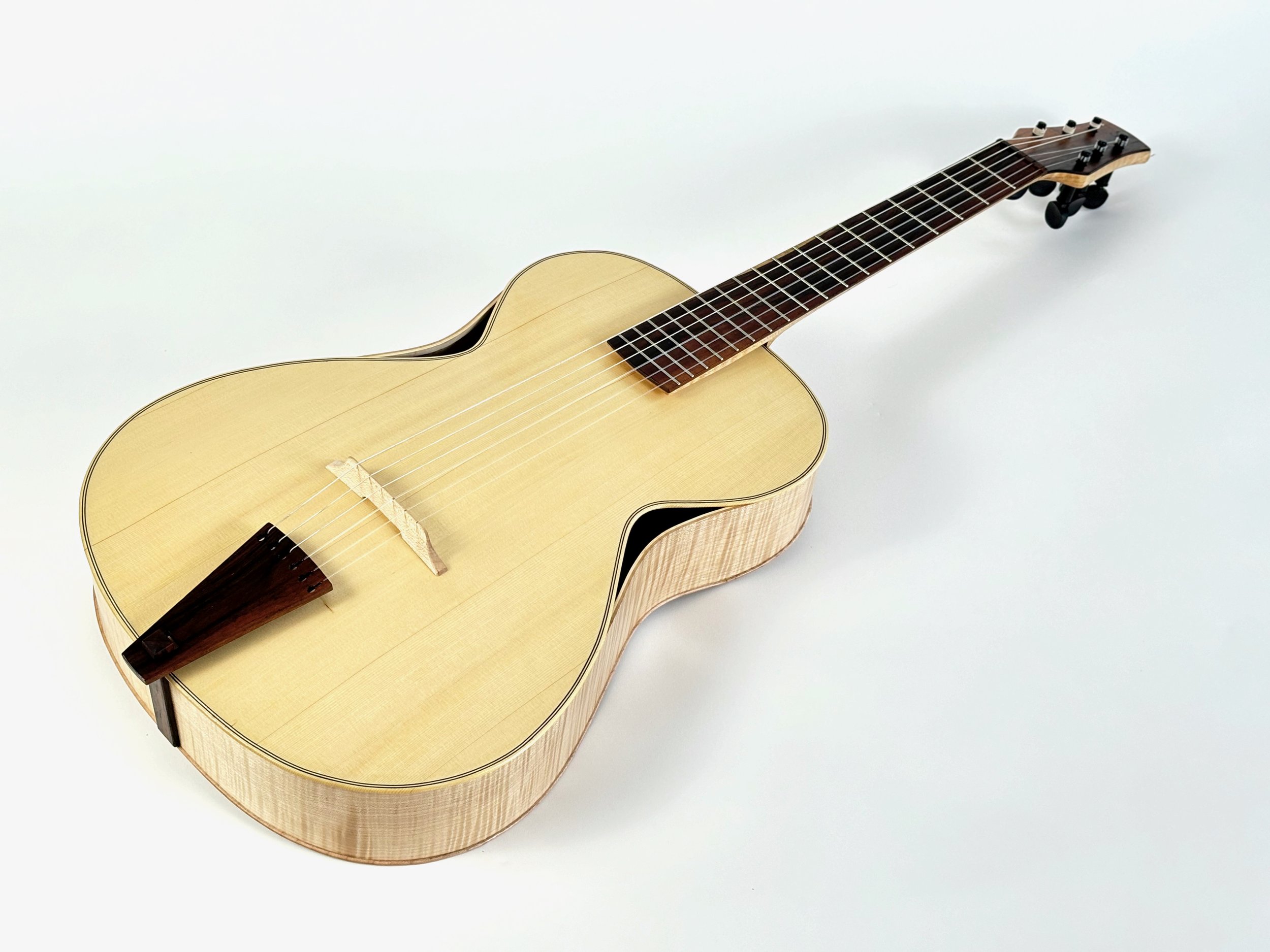
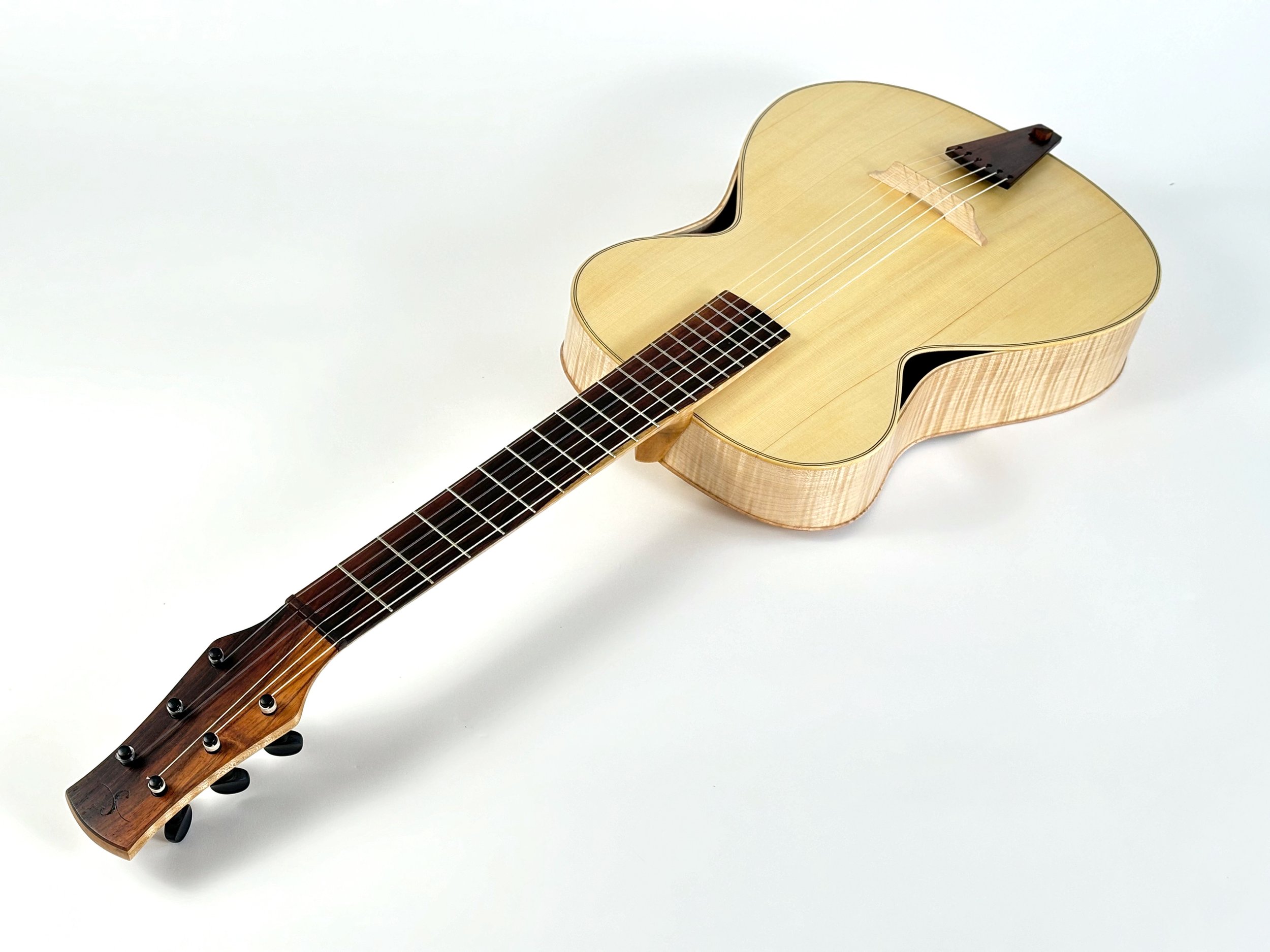
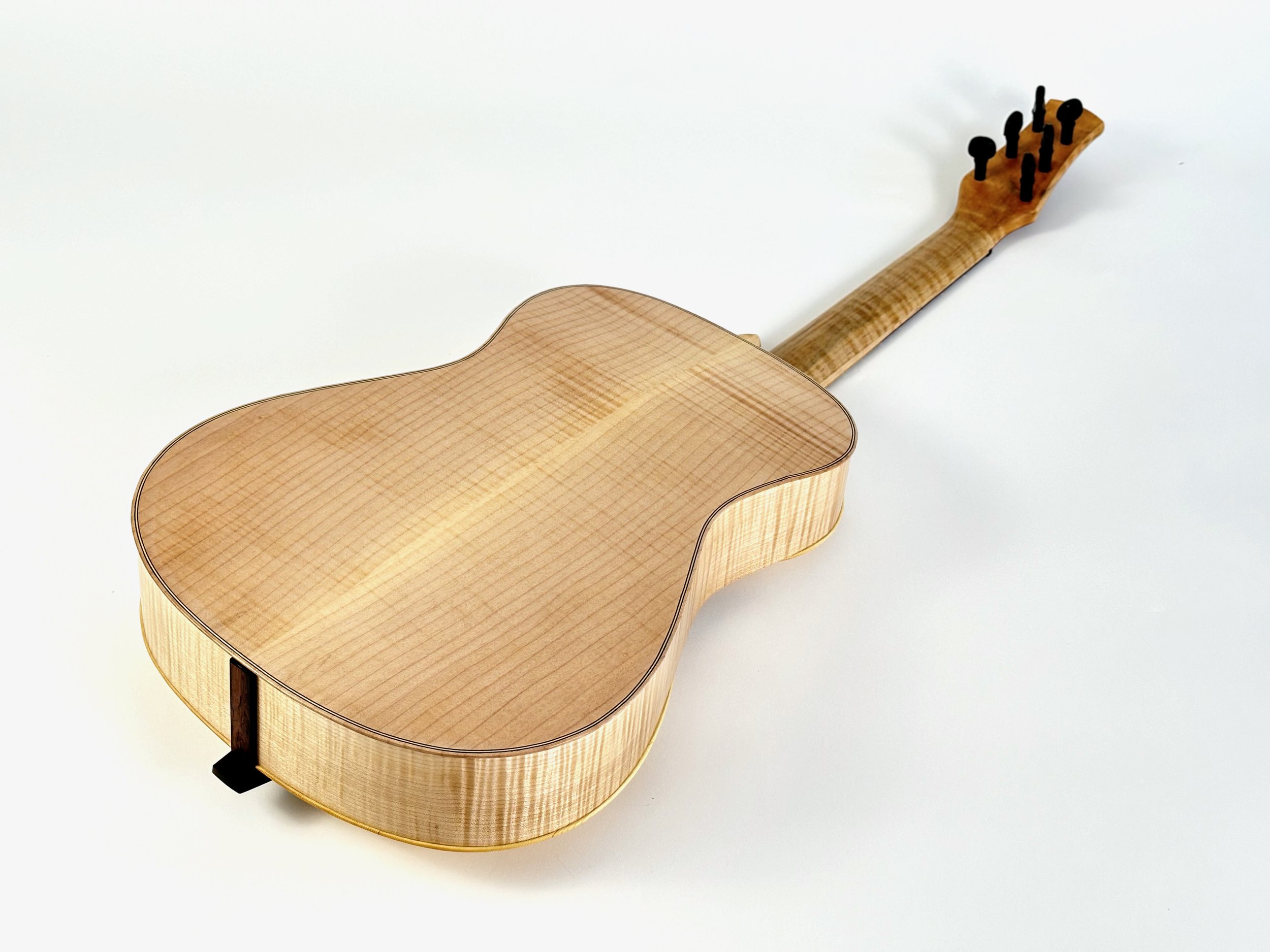

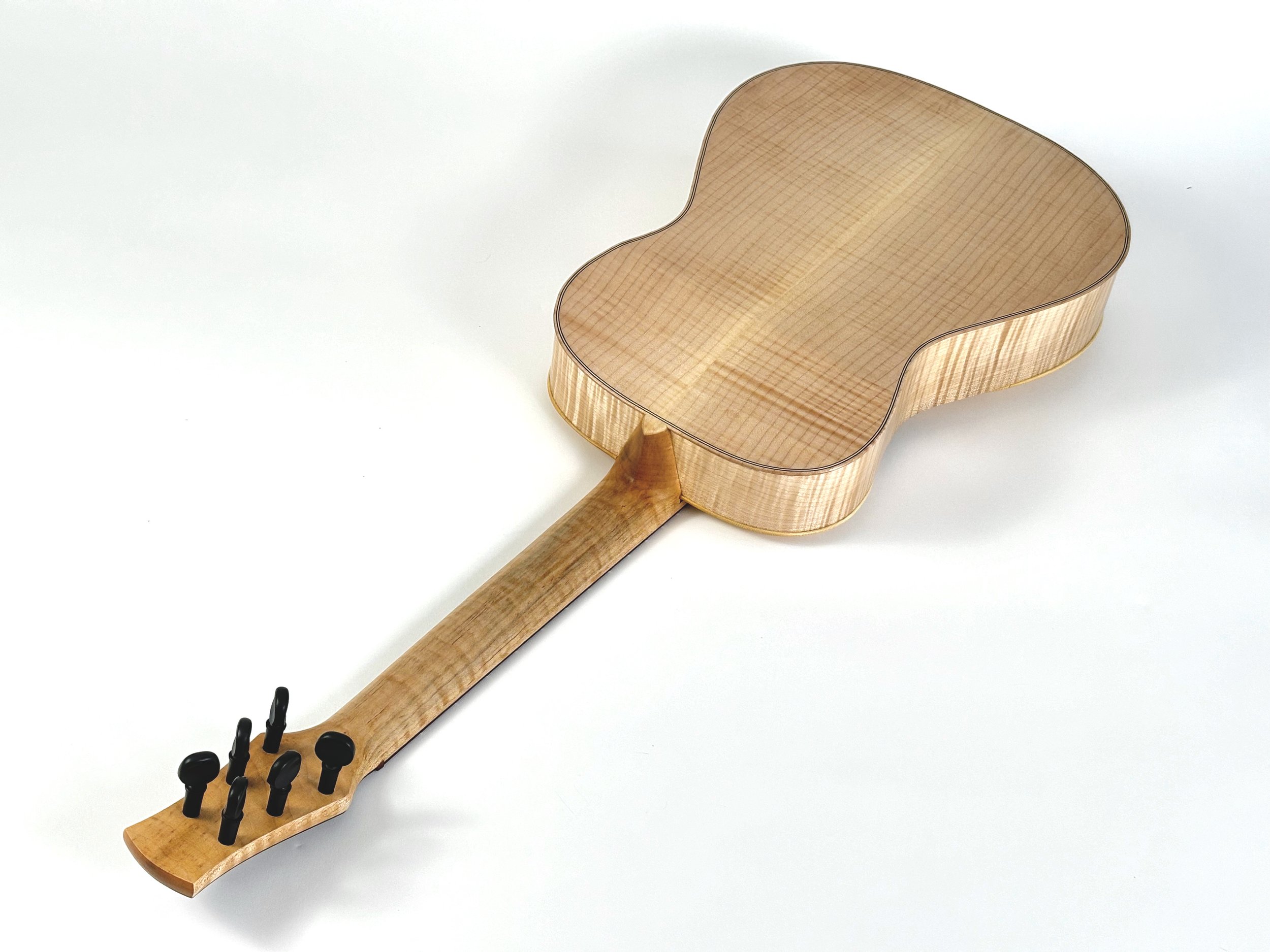

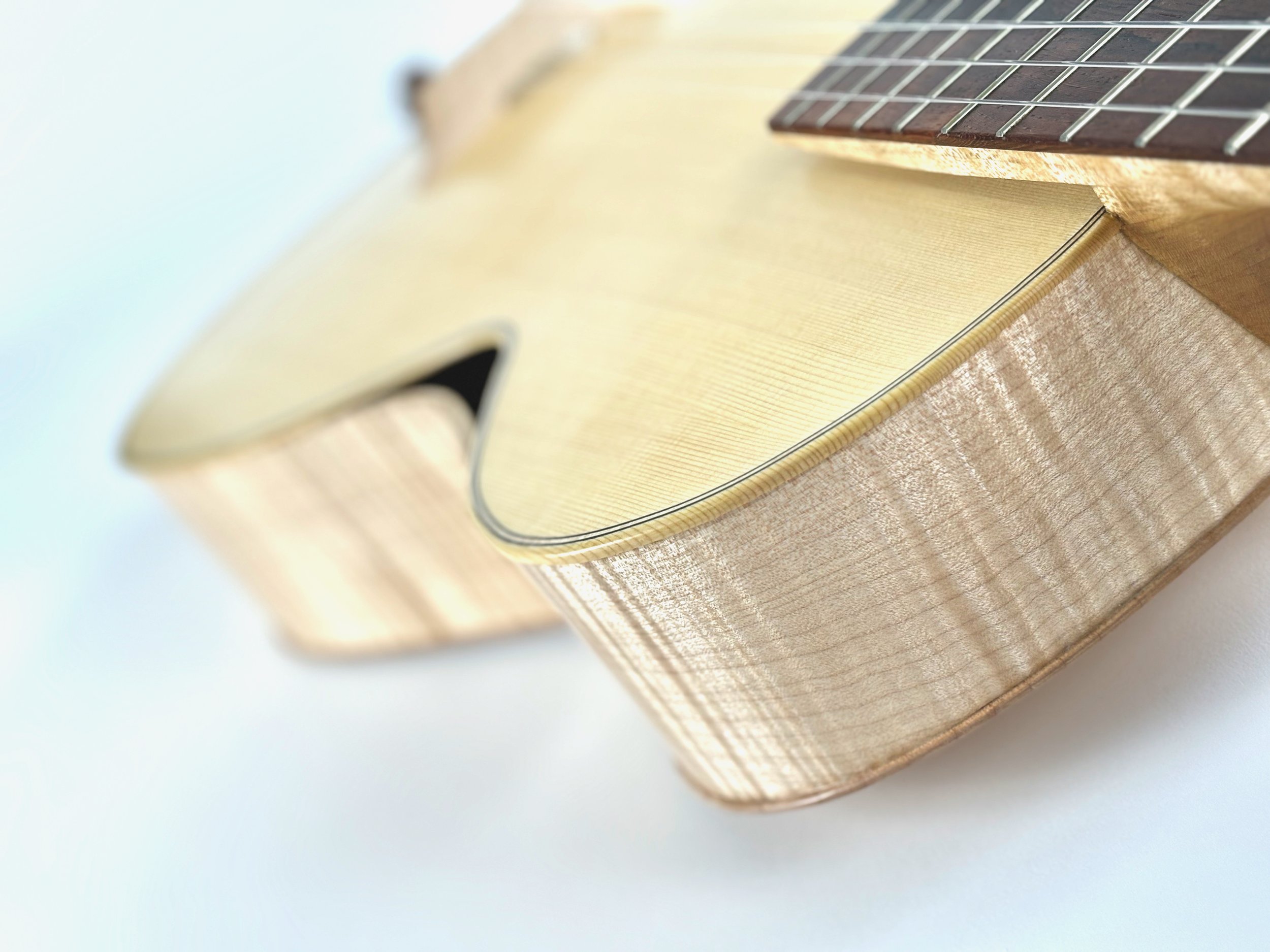
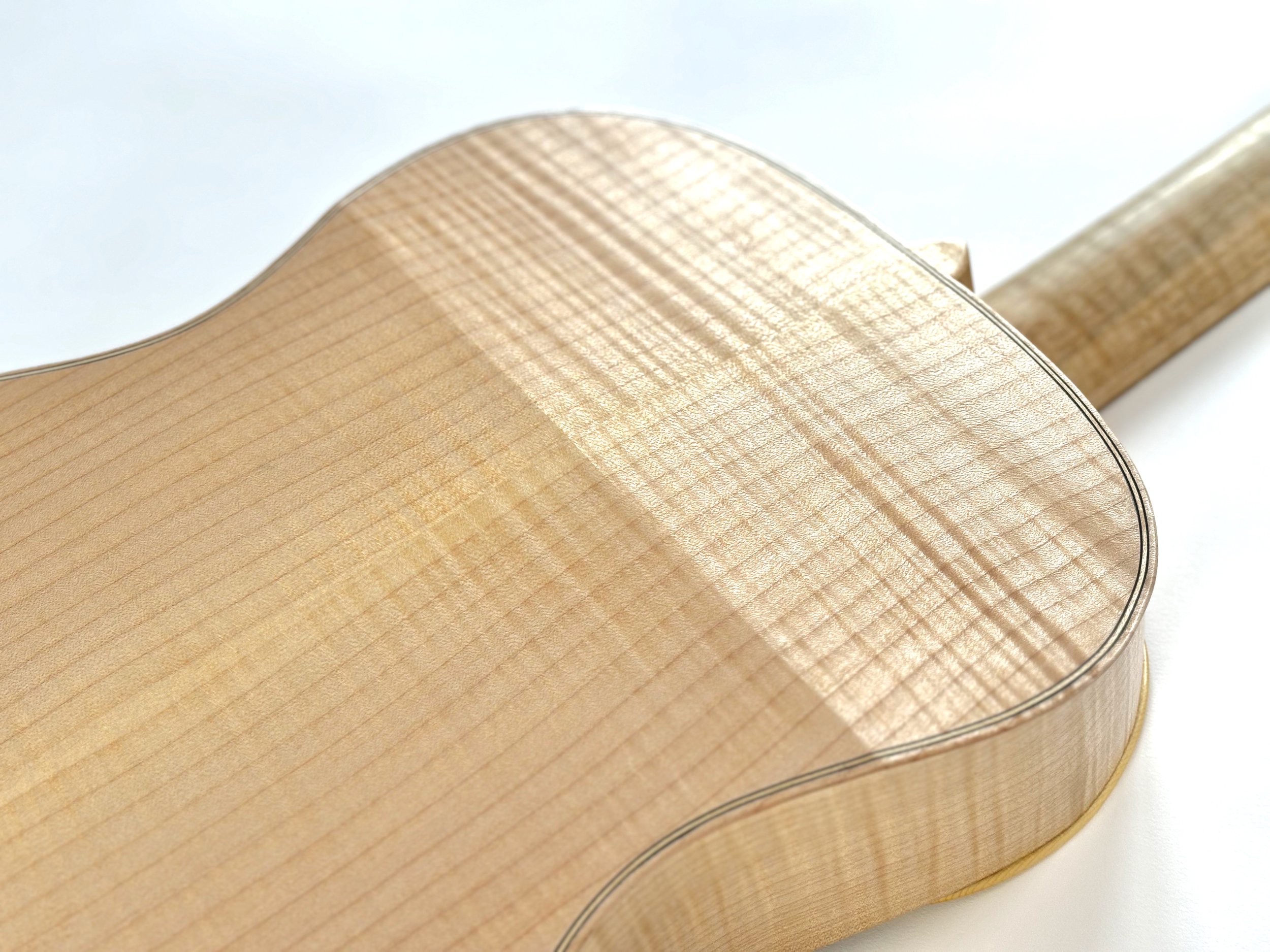

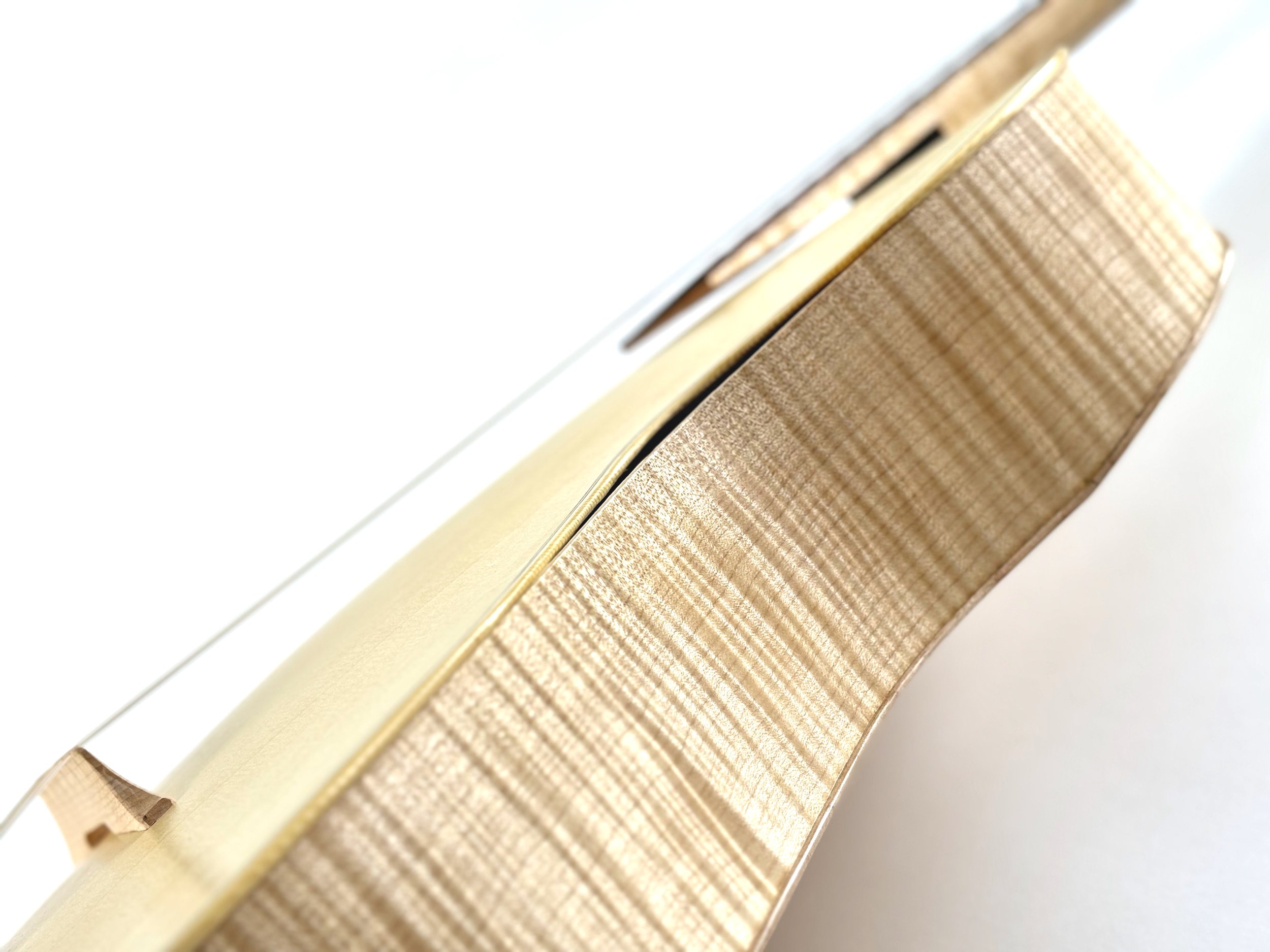
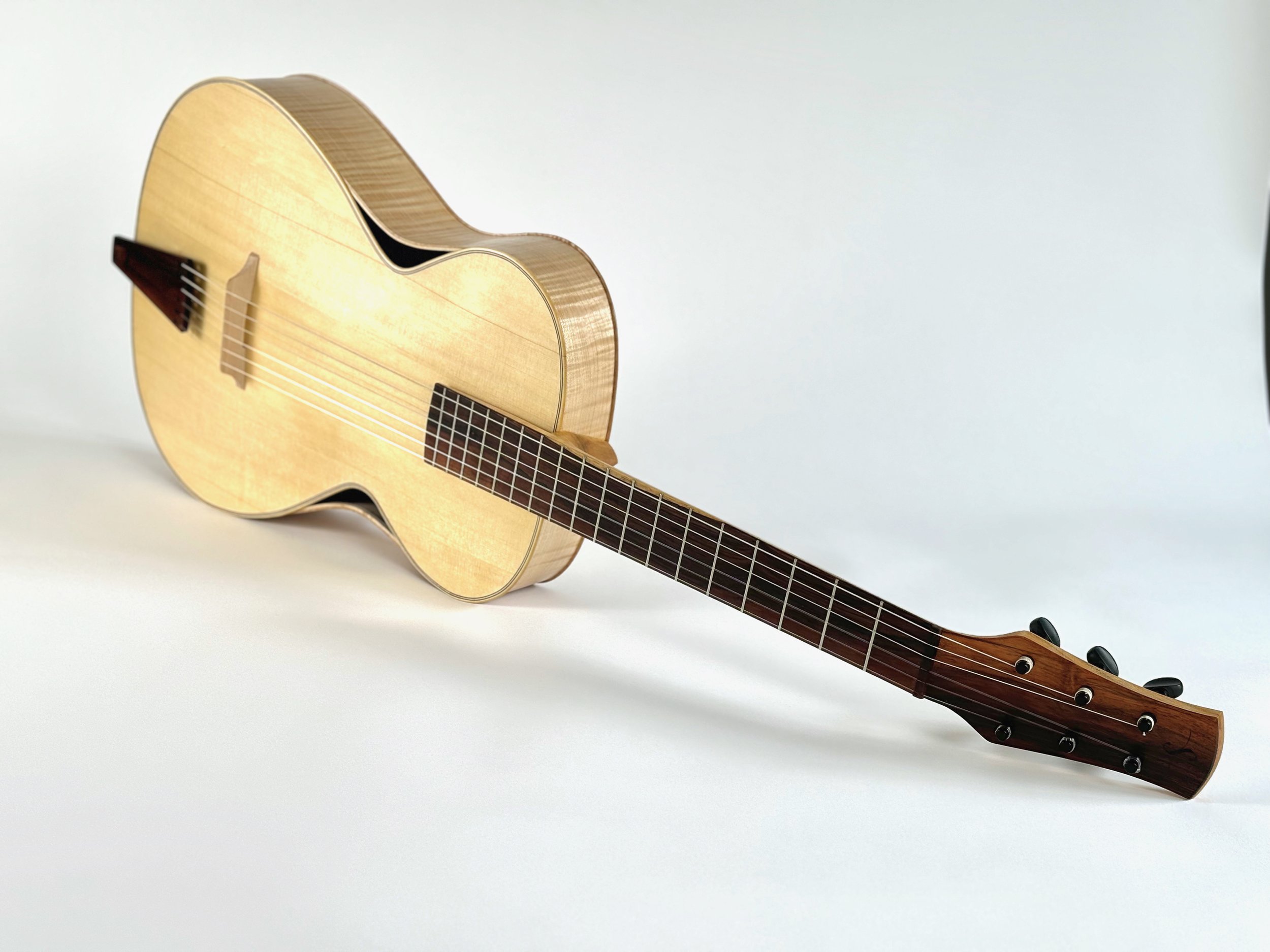
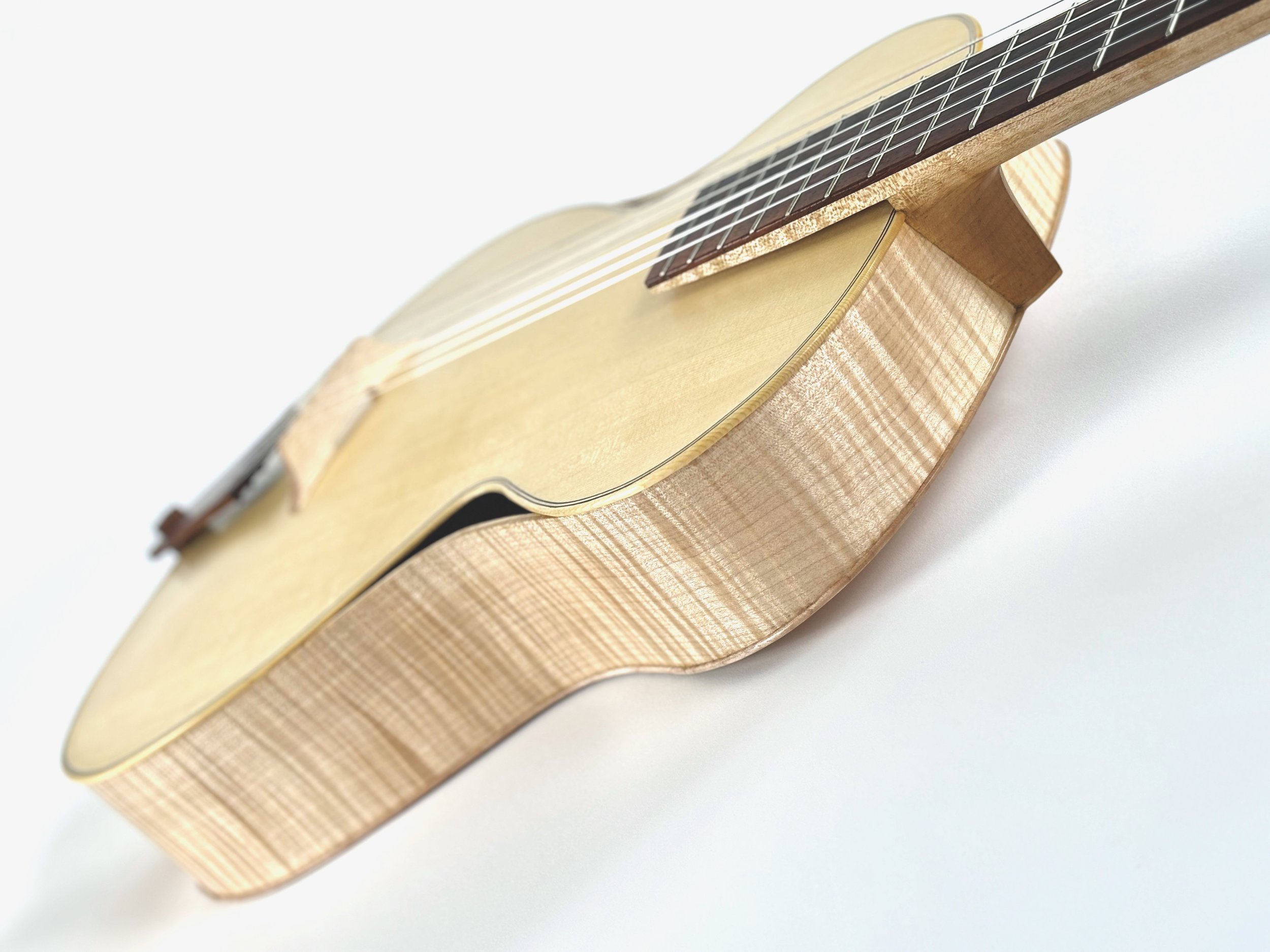
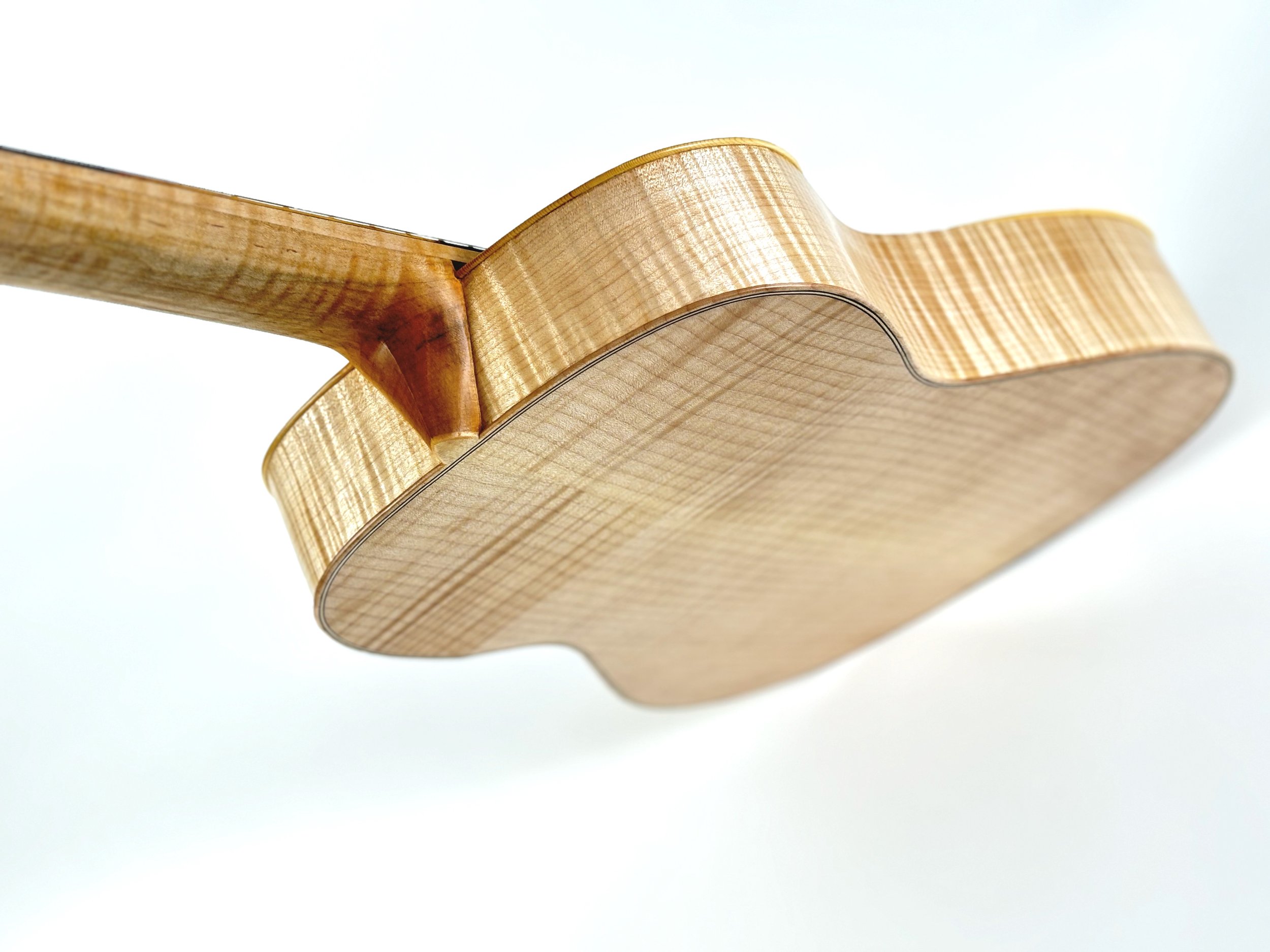
What instrument has six strings, is tuned in fourths (with a major third mixed in), and has been immensely popular both solo and in small groups for a long time? The viol. Oh yes, and the modern guitar.
One could go so far as to say that the arch top guitar should never have taken the violin as a model, as it is so clearly more akin to viols, specifically the bass viol known as a “viola da gamba” or “division viol”. With this hypothesis in mind, I set about researching and experimenting with the design and fabrication methods common to viols. La Cremonese represents my thesis, the first guitar resulting from the application of those methods.
There are several important points of divergence between violin-style instruments (including archtop guitars) and viol-style. One is the flat back of viols, albeit with a bent section to allow for a deeper soundbox. The tailpiece design, with a notched square post, is also a unique and ancient solution. But probably the biggest differentiator is that most viol-family instruments had a soundboard made of multiple staves of wood ingeniously bent and joined together, leaving only minor carving to be done. In contrast to the violin tradition (“digged out of the plank”, in Simpsons’ memorable phrase), the viol approach leaves the wood fibres continuous along the entire length. These “coopered” tops (so named because the technique is similar to that used in barrel-making) can potentially be stiffer for a given weight, which always has a positive effect on sound production.
All of these features are present on La Cremonese. But I wanted it to represent more than just a list of features: I took it upon myself to become immersed in the old methods themselves. That meant no power tools or sandpaper were used in its creation, nor synthetic adhesives. Sharp tool steel, strings and wedges, hot hide glue, and ancient abrasives like horsetails and pumice were the way.
I found that I enjoyed this traditional process immensely. And more surprising, the speed at which one could work and produce instruments was on par with more typical modern methods. In a way, La Cremonese is more than a guitar- it is a manifesto advocating a new way of working- one more in harmony with the needs of the maker and the player, and of the world they live in.
